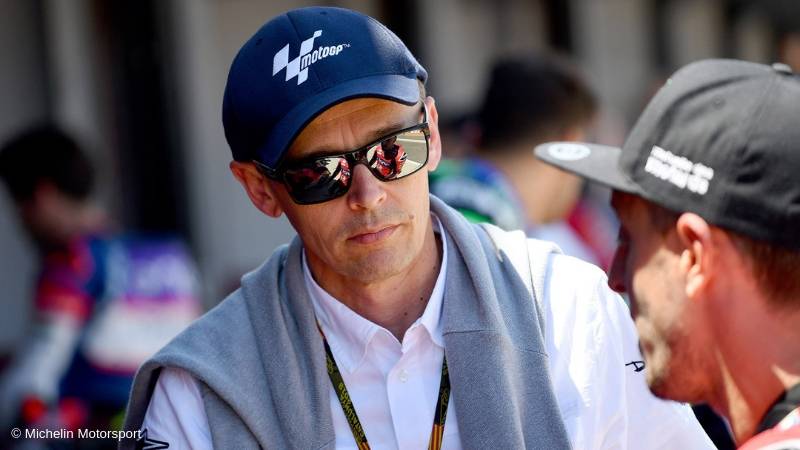
During the race weekend at the Sachsenring, a piece of motorcycle racing history will be made. For the first time in a MotoGP event, we will see on the track bikes with electric motors instead of internal combustion; will be the debut of the MotoE. This is the first step of a long journey.
But MotoE had a difficult start, even before the first race. During the preseason tests in Jerez, a fire completely destroyed the paddock with all the bikes, batteries and charging stations.
Energica, the Modenese company that builds the bikes and the championship suppliers have allowed us to reconstruct everything in just over two months, allowing the MotoE World Cup to start again. Before the Sachsenring, an 3 days test was performed on the Valencia track to test the new bikes, the procedures and to play a complete simulation of a race weekend.
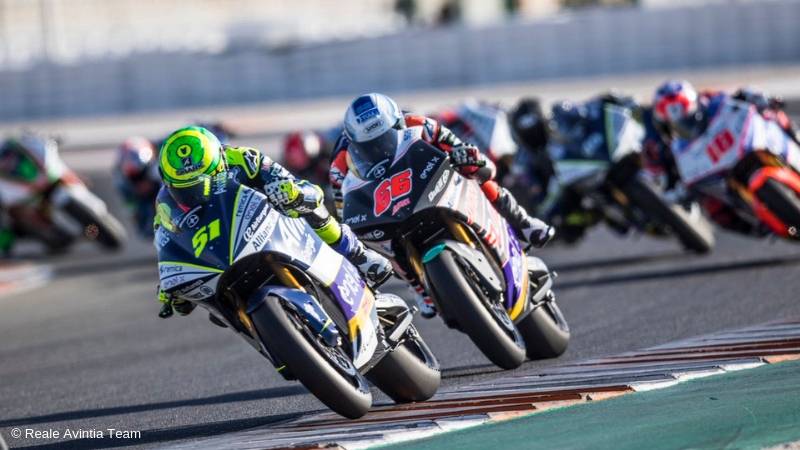
On this occasion we met Nicolas Goubert, the championship director, immediately after the conclusion of the race simulation won by Eric Granado. Goubert explained that the race lasted one less lap, 7 instead of 8, as the mobile charging stations to be used on the grid had been destroyed in Jerez and were not yet available. Normally le MotoE they will exit the pits with the 100% battery and will be recharged on the starting grid to recover the energy used in the training lap. The aim is to recover an extra lap for the race. The approach for this first edition of the MotoE it's very conservative and the goal is to give the riders full power from the start to the end of the race. As a demonstration of this, at the end of the simulated race in Valencia, the battery charge level was for all riders above 40%.
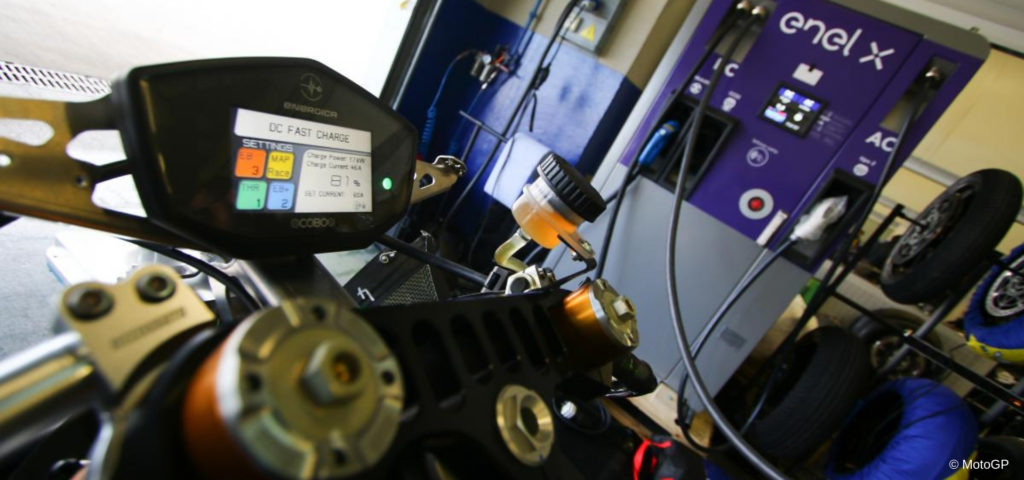
The components that will most affect the first two races of the series will be the charging stations installed in the paddock. In Germany and Austria the motorcycles will be recharged by the standard columns used in the tests; these are commercial equipment also installed on the normal road network. During the first tests in Jerez there were problems with having the energy needed to recharge the bikes simultaneously due to the limits of the size of the circuit's electrical network. On this occasion it was possible to load a maximum of 3-4 bikes at a time. To overcome the problem, charging stations have been designed with an integrated 50kWh battery. This battery recharges slowly from the circuit's electrical network and then quickly transfers the energy to the bike's battery during fast charging (from 20 to 30 minutes).
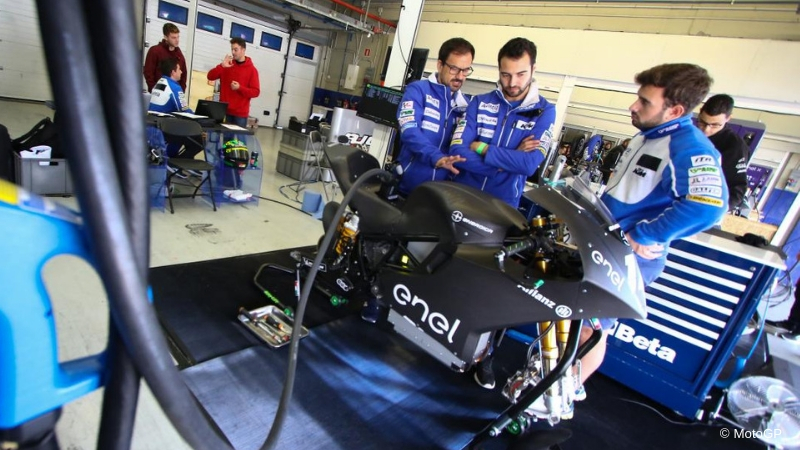
Unfortunately, the Jerez fire slowed the introduction of the new charging stations, which will be available only from the Misano race. To allow the motorbikes to be reloaded effectively in the GP of Germany and Austria, the circuit's electrical network will be integrated with auxiliary biodiesel-powered generators that will provide the necessary power during peak loads. This bridge solution was effectively adopted during the Valencia tests. In Misano and for the following stages the auxiliary generators will be eliminated. On the grid of MotoE the internal combustion power generators for the electric blankets will also disappear and will be replaced with battery systems already at the Sachsenring.
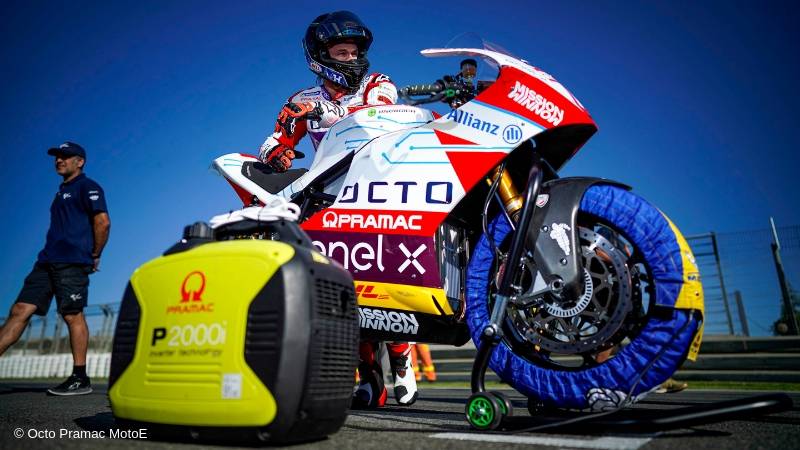
During the tests, starting tests were carried out with different types of grids in order to observe the drivers' behavior at the first corner. With 260kg bikes, the greatest concern is the impact between pilots and starting is the most risky moment from this point of view. Since no problems were found, the standard grids were confirmed; so we will see in Germany 3 pilots in a row with MotoGP.
For the full report of the Valencia tests including the race simulation, please refer to the dedicated section (here the link).













